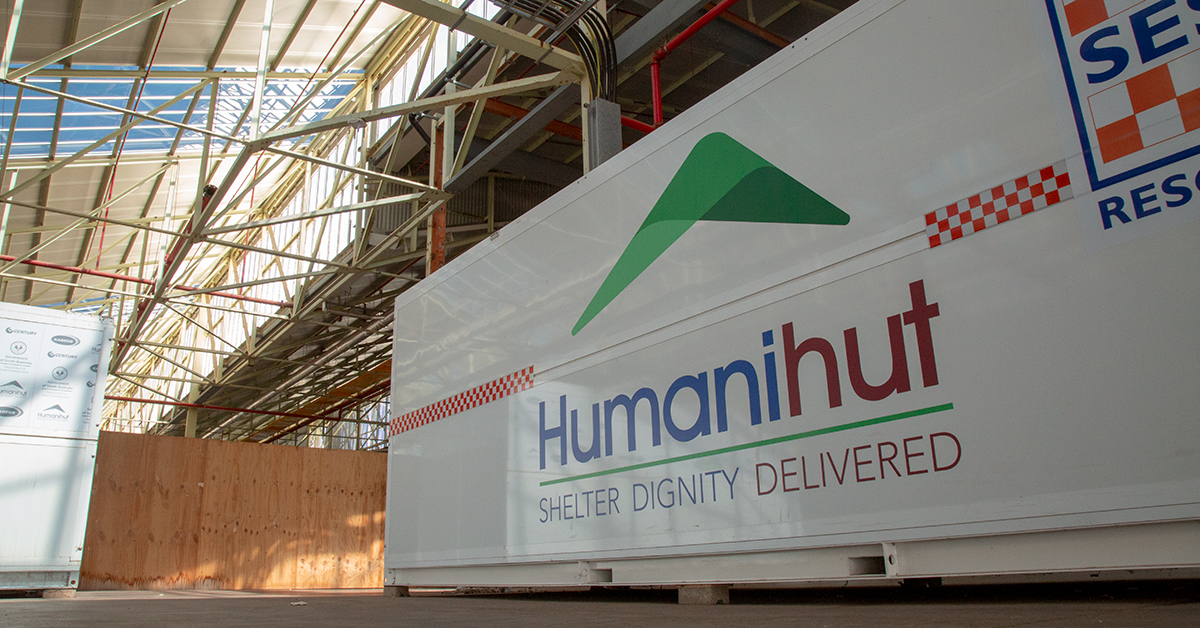Humanihut set to deliver more than just shelters

Neale Sutton’s career has been defined by his role as an officer in the Australian Defence Force. It was in this role, whilst deployed with the United Nations (UN) in Timor that he first gained experience in the repatriation of refugees. He saw firsthand the necessity for individuals to have access to adequate and safe accommodation during a period of displacement. This was made especially pertinent by the fact that refugees spend on average 12 years at a camp, most of that time living in tents that last only about 6 months before needing replacement.
Neale knew that a long-term and safe accommodation system that could be deployed rapidly and efficiently to cater for a sudden and substantial number of displaced people was needed. It wasn’t until 2013, during the early throes of the war in Syria, that the idea for Humanihut began to form – in a mate’s backyard over a lazy pizza dinner.
"While the kids swam in the pool we got to talking about the fact that Westerners could probably do better for the plight of the Syrian refugees. From that conversation came the idea of the Humanihut and it just ran from there."
Neale Sutton, CEO & MD, Humanihut Pty Ltd.
The Humanihut Shelter System is a hardy and scalable field infrastructure system that can be rapidly deployed to aid displaced people in their greatest time of need. Furthermore, the versatility of the system lends itself to providing shelter and storage solutions to a variety of market sectors. Each Humanihut can be erected in 5 minutes by a small team with the assistance of some simple machinery, which means it’s exponentially more efficient than any other temporary buildings and tents on the market.
Initially, Sutton was focused on a replacement for the humble canvas tent. On average, a canvas tent in a refugee camp would last 6 months before it required replacement. Therefore, a refugee would require 24 tents during their stay. The Humanihut field infrastructure hut, however, slowly morphed with the added element of containerisation. Sutton developed a system that used two containers to transport 16 huts with a third container used to carry the fittings and fixtures that could then be transformed into bathrooms once the huts were set up.
From here you add power, water and sewage to create a small village. The beauty of Sutton’s system was that, in addition to the improved accomodation and facilities, the Humanihut system would last for 20 years with a small amount of ongoing maintenance.
Within 6 months of the initial backyard conversation, the concept for a system that could rapidly deploy a complete village onto a greenfield site with the potential to service 13,000 displaced people within a week had been developed.
Today, Humanihut is widely celebrated as the lead innovator in the field infrastructure and shelter industry. In 2016, they were listed number 63 in the Disrupt 100 – a bi-annual Tällt Ventures publication celebrating the businesses with the most potential to influence, change or create new global markets.
Humanihut continues to be heavily involved in the humanitarian sector. However, they’re a for-profit company and have expanded into other sectors. Currently, they’re in conversation with a number of construction companies around improving the conditions of construction workers in the Middle East. They’re also working with the South Australian State Emergency Service to provide emergency accommodation and camp deployment for fire and rescue operations, such as bushfires. Furthermore, they’ve worked with a company called Aus Pods that specialises in self-storage. And they’ve been in talks with different militaries about developing built infrastructure systems.
Their advancement into varying markets has presented a series of challenges for Humanihut, but they continue to meet the challenge and succeed. Sutton credits the Tonsley Innovation Precinct to helping his business to grow.
"I started to imagine what could be. The number of organisations planning on coming [to Tonsley], the networking that could occur, and the fact that it’s 8 hectares that’s sitting under one roof, ... all of those new ideas got us very interested."
Neale Sutton, CEO & MD, Humanihut Pty Ltd.
Humanihut was one of the first companies to take up tenancy at Tonsley Innovation District, and they haven’t looked back. The proximity to other innovative companies at the Tonsley site is an invaluable asset to the growth of Humanihut. For example, Humanihut were able to get advice from SAGE Automation engineers, also located under the MAB just 400 m away, on the electrical system of the deployed huts.
The melting pot of experts and innovators in their field, the abundance of networking opportunities and the state of art facilities means Tonsley ticks all the right boxes for Humanihut.
Are you interested in finding out more about Humanihut or Tonsley?
Stay up to date with the latest news, developments events and activities at Tonsley Innovation District